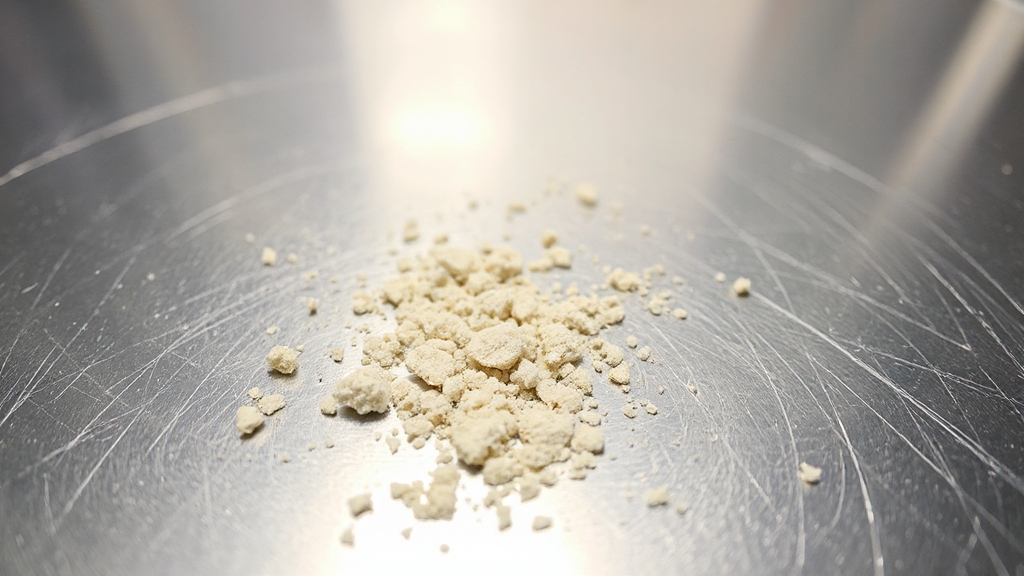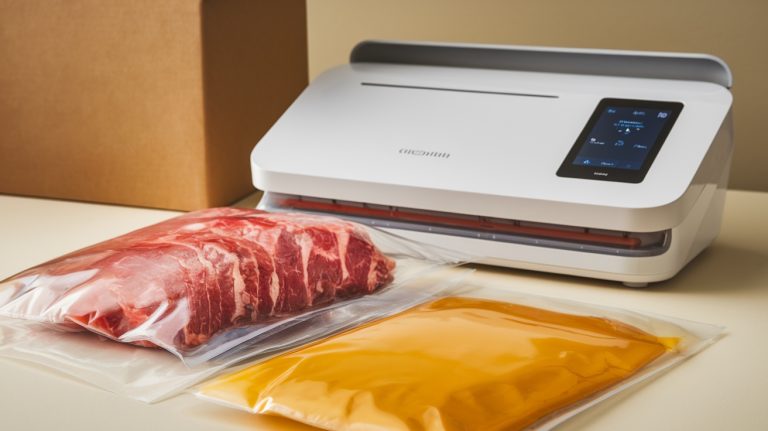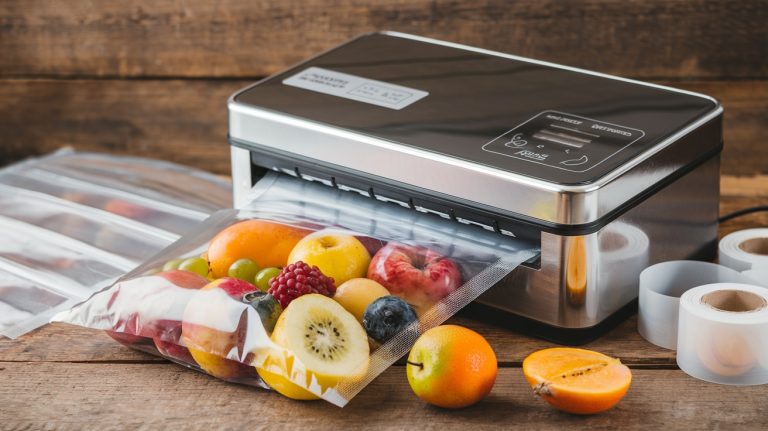Does Stainless Steel Kill Yeast: The Science Behind the Surface
Curious if stainless steel kills yeast? You’re looking at a material that’s strong and corrosion-resistant, but it doesn’t have inherent antimicrobial properties to destroy yeast.
Scientifically, stainless steel’s smooth, nonporous surface limits microbial adhesion, yet yeast can persist on it depending on environmental factors and strain. It won’t actively kill yeast like copper might with its biocidal ions. Stick around to uncover deeper insights into surface modifications and microbial control strategies.
Key Takeaways
- Stainless steel does not kill yeast; it lacks inherent antimicrobial properties.
- Yeast can remain viable on stainless steel surfaces over time.
- Surface smoothness reduces microbial adhesion but doesn’t eliminate yeast.
- Environmental factors and yeast strains affect survival on stainless steel.
- Modifications like copper coatings can enhance antimicrobial effects against microbes.
Stainless Steel Properties
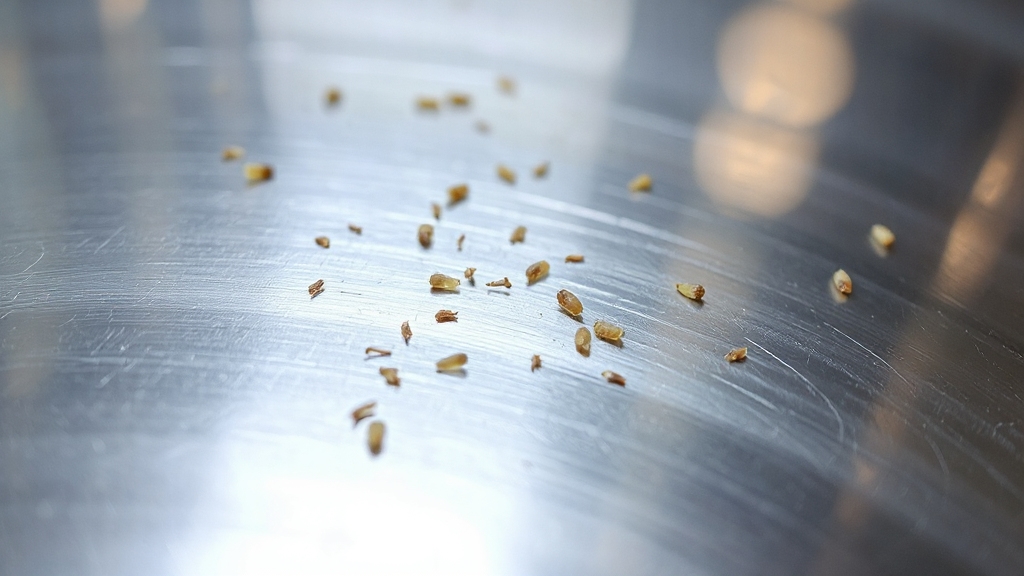
How does stainless steel stand out as a material of choice in environments demanding hygiene and durability? You’ll find its composition—iron, chromium, and nickel—creates a robust alloy with exceptional strength and corrosion resistance. The chromium forms a protective oxide layer, preventing oxidation and maintaining a clean surface, even when scratched, as it regenerates swiftly.
Moreover, you’ll notice stainless steel’s smooth, polished finish hinders bacterial adhesion, unlike rougher surfaces. It’s chemically stable, resisting harsh disinfectants and high sterilization temperatures without degrading. While it doesn’t actively kill microbes, its design minimizes attachment and simplifies cleaning, ensuring hygiene. This smooth surface also reduces bacterial multiplication and prevents biofilm formation, enhancing overall cleanliness.
You can rely on its structural integrity under stress, making it ideal for rigorous settings where cleanliness and longevity are non-negotiable priorities. Additionally, stainless steel is often used in baking environments for tools and containers, ensuring no adverse reaction with ingredients like sourdough starter fermentation.
Yeast Survival on Metal Surfaces
Shifting from the robust properties of stainless steel, let’s examine how yeast interacts with metal surfaces and survives under such conditions. You’ll find that yeast survival hinges on the metal’s properties.
Stainless steel, despite its durability, doesn’t possess strong antimicrobial effects, so yeast can remain viable on it for extended periods. Research has shown that metal ions can significantly impact yeast viability based on their chemical properties. Additionally, the durability of stainless steel, as seen in baking scales, ensures a stable surface for yeast to persist without degradation.
Stainless steel’s durability doesn’t equate to strong antimicrobial properties, allowing yeast to persist and remain viable on its surface for prolonged durations.
Consider these critical factors in yeast-metal interactions:
- Metal Type: Different metals affect yeast viability uniquely due to varying antimicrobial properties.
- Membrane Stress: Exposure to metals can cause membrane depolarization and oxidative damage in yeast cells.
- Viability Studies: Live/dead staining reveals yeast survival is higher on stainless steel than on other metals.
- Environmental Impact: Conditions and yeast strain influence survival and biosorption on metal surfaces.
Comparing Antimicrobial Effects of Metals
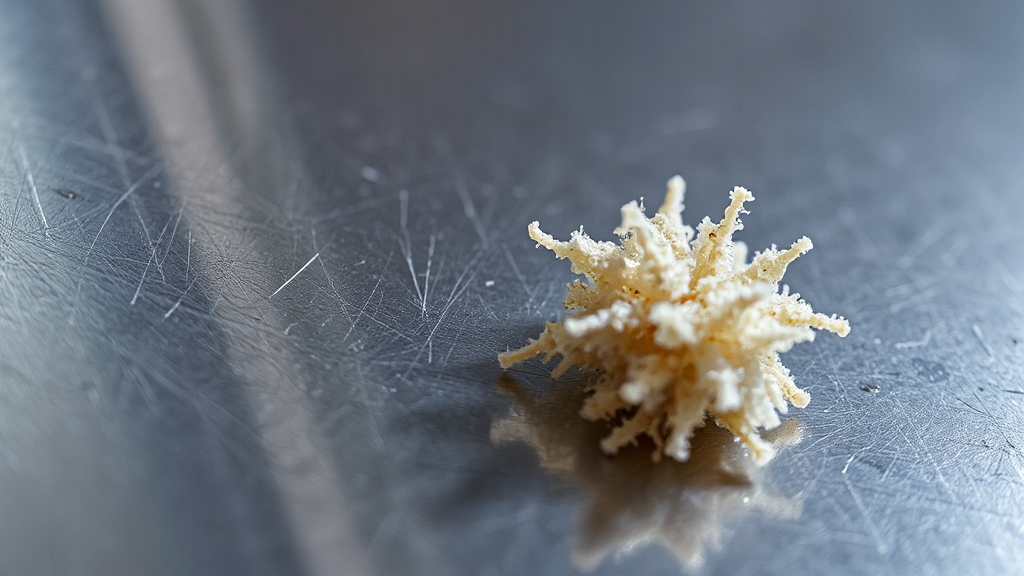
While stainless steel offers limited antimicrobial action, other metals demonstrate remarkable efficacy in combating microbial growth. You’ll find silver, with its potent ions, excels against Gram-positive and Gram-negative bacteria, often used in medical applications.
Copper, however, outperforms silver in diverse conditions, targeting a broader spectrum of bacteria, viruses, and fungi through the oligodynamic effect. Additionally, Copper’s multiple biocidal mechanisms make it extremely difficult for microorganisms to develop tolerance against it.
Consider gold, too—it shows biocidal activity, especially as nanoparticles, while emerging metals like gallium disrupt bacterial iron metabolism uniquely. It’s also worth noting that certain technologies, like vacuum sealer bags, can complement antimicrobial strategies by extending the shelf life of food and reducing microbial contamination risks.
You should note that metals release ions binding to microbial proteins, inducing oxidative stress via reactive oxygen species, and damaging DNA.
Though effective, you must weigh cytotoxicity risks; high concentrations of silver or copper can harm mammalian cells, demanding controlled use in antimicrobial strategies.
Surface Modifications for Enhanced Hygiene
As we explore surface modifications for enhanced hygiene, you’ll notice that stainless steel’s inherent antimicrobial properties can be considerably improved through advanced treatments. You’re looking at cutting-edge methods that alter surface chemistry and topography to combat microbial adhesion.
By employing techniques like plasma treatment and electrochemical anodization, you can significantly boost stainless steel’s antibacterial efficacy. Moreover, studies have shown that plasma treatment can reduce bacterial adhesion by up to 92% on modified surfaces. Additionally, understanding how fermentation processes work can inspire innovative hygiene solutions, as seen in techniques like natural fermentation benefits that enhance microbial resistance in various applications.
Consider these precise modifications for superior hygiene:
- Plasma Treatment: You’ll enhance surface oxidation, reducing bacterial adhesion.
- Electrochemical Anodization: This creates nanostructured surfaces that physically disrupt bacterial cells.
- Copper Coating: When nanotextured, you’ll achieve high antibacterial activity.
- Surface Charge Alteration: You can manipulate adhesion by changing surface charge.
Practical Applications in Hygiene-Sensitive Areas
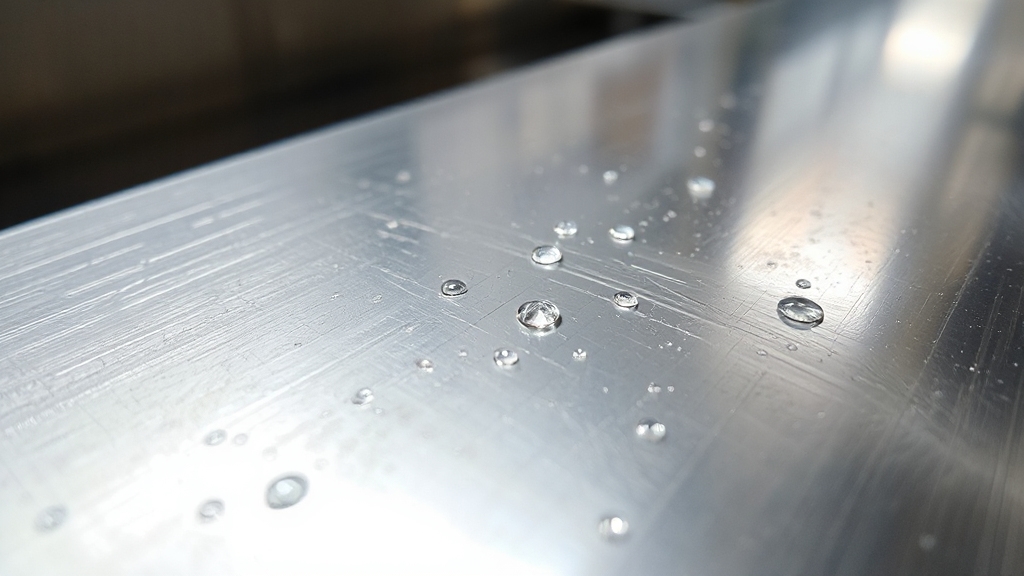
As you assess stainless steel’s role in hygiene-sensitive areas, consider its widespread use in hospitals where its corrosion resistance and smooth surface minimize yeast adhesion and support stringent sterilization protocols.
You’ll also find it integral to food industry hygiene practices, as its durability under harsh cleaning agents prevents microbial buildup, including yeast, on processing equipment.
Recognize that while stainless steel itself isn’t inherently antifungal, its compatibility with rigorous sanitization makes it a critical material in controlling contamination in these environments. Additionally, recent advancements have led to the development of antibacterial stainless steel with nanotextured surfaces that puncture bacterial membranes, enhancing its effectiveness against microbial threats in such settings.
Moreover, the smooth surface of stainless steel aligns with temperature control practices that can regulate fermentation processes to prevent unwanted microbial growth in sensitive settings.
Stainless Steel in Hospitals
Given the critical need for hygiene in medical environments, stainless steel stands as a cornerstone material in hospitals for its exceptional properties tailored to hygiene-sensitive areas. You’ll find it in surgical tools, bed rails, and lab equipment, where its nonporous surface and corrosion resistance prevent microbial buildup and endure rigorous sterilization.
It reduces hospital-acquired infections by resisting biofilm and supporting strict cleaning protocols. Additionally, its high resistance to fire and heat ensures safety in environments with electrical and heat-producing equipment, preventing fire spread. Furthermore, its durability makes it ideal for maintaining long-term hygiene standards in settings that require frequent and intense cleaning, much like the need for high-protein bread flour in achieving structure in baking.
Consider these key benefits you’ll observe:
- Sterilization Ease: You can sterilize it repeatedly without degradation.
- Chemical Inertness: It won’t react with harsh disinfectants.
- Durability: You’ll rely on its longevity over alternative materials.
- Contaminant Resistance: Its smooth finish minimizes pathogen accumulation.
Food Industry Hygiene Practices
While hygiene remains paramount in medical settings, you’ll find stainless steel equally indispensable in the food industry for maintaining stringent cleanliness standards in hygiene-sensitive areas. Its non-porous surface and low bacterial retention capacity prevent microbial buildup on preparation tables, cutting tools, and trays, minimizing cross-contamination risks.
You’ll appreciate how its corrosion resistance and compatibility with harsh sterilization chemicals ensure thorough cleaning protocols without degrading the material. Electropolished finishes further enhance surface hygiene by eliminating microscopic imperfections where bacteria could adhere.
Additionally, stainless steel’s ability to resist impact and temperature fluctuations ensures it remains intact and hygienic even under demanding conditions. This durability also aligns with the need for reliable equipment in baking environments, where materials like food-grade silicone are often used for their heat resistance and safety.
Stainless steel’s durability also means it withstands wear in high-touch zones, supporting long-term compliance with food safety regulations like HACCP and GMPs. When you use it in food plants, you’re ensuring both product safety and operational reliability.
Research Insights on Microbial Control
How can we effectively combat microbial growth on stainless steel surfaces? You’re likely aware that stainless steel, despite its smooth, corrosion-resistant properties, doesn’t inherently kill microbes like yeast or bacteria. Research reveals innovative strategies to enhance its antimicrobial potential through surface modifications.
Dive into these cutting-edge approaches:
- Copper Ion Deposition: You’ll find copper ions disrupt bacterial cell membranes, boosting antibacterial effects.
- Vanillin Functionalization: Studies show vanillin coatings achieve 100% bacterial viability reduction.
- Plasma Treatments: These alter surface chemistry, enhancing microbial resistance.
- Nanostructured Surfaces: Nano-needles physically puncture microbial cells, preventing growth.
- Temperature Control Importance: Utilizing precise temperature control tools ensures optimal conditions for preventing microbial growth during processes like baking.
Frequently Asked Questions
Can Stainless Steel Prevent Yeast Growth Naturally?
Let’s explore whether stainless steel can naturally prevent yeast growth. You’re dealing with a material that lacks inherent antimicrobial properties, so don’t expect it to stop yeast on its own.
Its surface, even with a stable passive film, doesn’t resist microbial adhesion effectively. You’ll need to evaluate environmental controls like moisture reduction or regular cleaning to limit yeast proliferation on stainless steel surfaces.
Surface modifications might help too.
Does Stainless Steel Affect Yeast Fermentation Processes?
You’ll find that stainless steel tanks create a controlled environment, optimizing temperature and oxygen levels for yeast activity.
They’re corrosion-resistant and easy to clean, minimizing contamination risks. This stability supports microbial growth and enhances fermentation efficiency.
You won’t see yeast hindered; instead, you’ll notice consistent product quality and reduced stress on yeast during the process.
Is Stainless Steel Safe for Yeast-Based Products?
Rest assured, scientific evidence confirms it’s a reliable choice. Stainless steel doesn’t harm yeast during typical use in food production.
Commercial bakeries trust it for sanitation and durability. Brief contact poses no risk to yeast viability or product quality.
Just avoid prolonged storage of acidic starters, as caution’s advised there, though research finds no substantiated issues.
How Does Stainless Steel Impact Yeast Metabolism?
You’re exploring how stainless steel impacts yeast metabolism. Notice that in stainless steel fermenters, environmental factors like oxygen and CO2 levels critically influence yeast activity.
You’ll find fermentation rates vary with gas composition—high CO2 often slows metabolism. Temperature control in these vessels is essential; fluctuations can stress yeast, altering metabolic efficiency.
Stainless steel’s thermal properties and inert nature help maintain controlled conditions, directly affecting yeast energetics and fermentation quality.
Can Yeast Develop Resistance to Stainless Steel?
Did you know that over 60% of yeast strains can adapt to environmental stressors through genetic mutations?
When considering if yeast can develop resistance to stainless steel, you’ll find it’s not the material itself but potential antimicrobial coatings or nanotexturing that challenge yeast.
Analyze how these modifications trigger stress response pathways in yeast, prompting adaptation.
You’ll see resistance isn’t direct but evolves from exposure to engineered surface properties over time.
Shine Isn’t Everything—Clean Smart, Not Just Hard
As you wrap up, understand that stainless steel isn’t a silver bullet for killing yeast. While it’s durable and resistant, it doesn’t inherently destroy microbes like yeast without specific treatments or coatings.
You’ve seen the data—yeast can linger on untreated surfaces. So, don’t rely solely on steel’s shine; incorporate rigorous cleaning protocols and consider antimicrobial modifications to guarantee hygiene in sensitive areas. Precision in microbial control is your ultimate safeguard.

